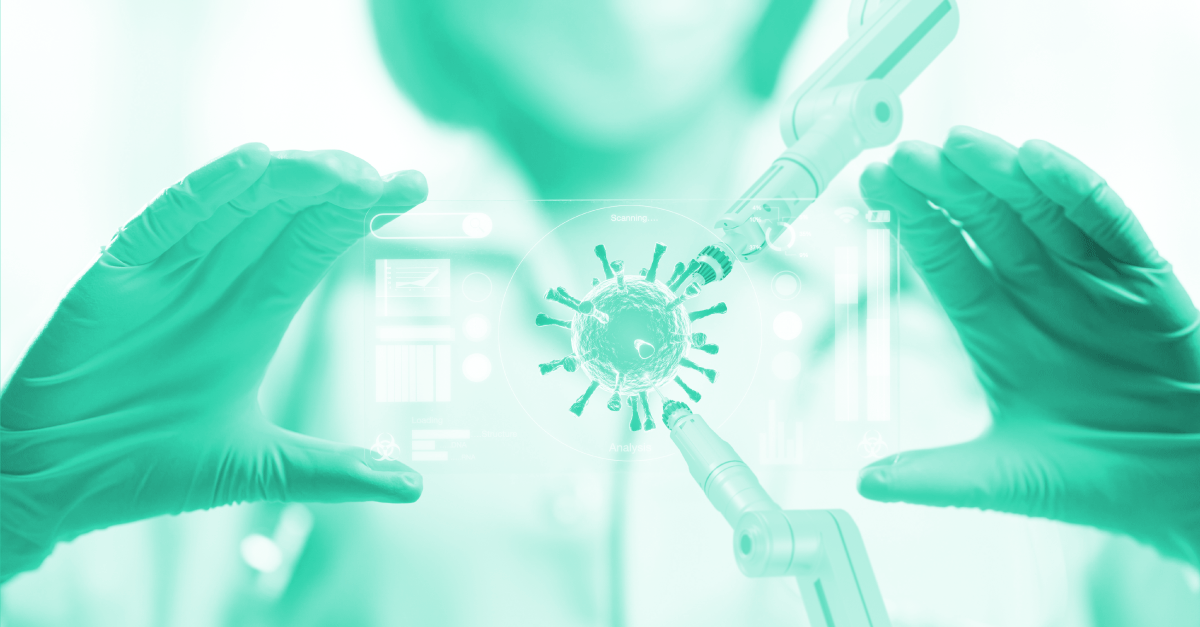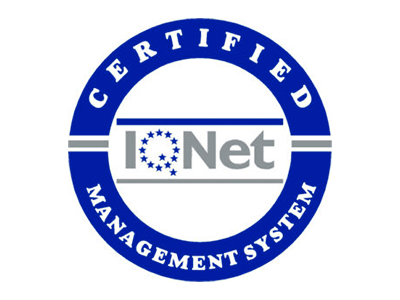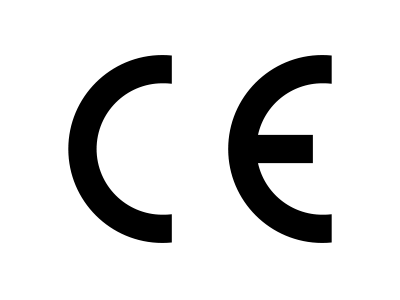Pharmacovigilance Glossary: A Comprehensive Guide to Key Terms
August 30th 2023

Whether you’ve just stumbled into the fascinating world of pharmacovigilance or are looking to brush up on some jargon, you’re in the right place. This handy glossary will equip you with the need-to-know terms that pop up in this crucial field. Let’s dive right in!
For those familiar with the world of medicines, you’ve likely heard the term “pharmacovigilance.” It’s our watchful eye, ensuring that medicines, once in the market, continue to be both effective and safe. But, as with many specialized domains, pharmacovigilance is brimming with its unique set of terminologies. Even if you’re well-versed in a related field, some of this jargon might still be a bit cloudy.
That’s where our guide steps in. We’ve crafted a concise glossary tailored for professionals like you — aware but not necessarily entrenched in the day-to-day of pharmacovigilance. Let’s deepen that understanding, connecting the dots between what you know and the specifics of drug safety.
The 30 Pharmacovigilance Terms You Need to Know
Navigating the world of drug safety? A robust understanding starts with mastering the essentials. Here are the 30 pharmacovigilance terms every professional should have in their toolkit.
1. Pharmacovigilance (PV)
Pharmacovigilance, often shortened to PV, stands as the cornerstone of medical drug safety. It isn’t just about observing and recording but is an intricate dance of detection, understanding, assessment, and prevention of adverse effects that might arise from medicines. PV spans both the pre- and post-marketing phases of a drug’s lifecycle, ensuring that as we gain more insights into a drug’s behavior in diverse populations, we adjust our understanding and guidelines accordingly.
2. Adverse Event (AE)
An adverse event refers to any untoward medical occurrence in a patient or clinical trial subject who has been administered a medicinal product. It is important to note that an adverse event does not necessarily have a causal relationship with the treatment received. Adverse events can occur during the use of a medicinal product within or outside the terms of the marketing authorization. They can also arise from occupational exposure.
3. Adverse Drug Reaction (ADR)
An Adverse Drug Reaction, commonly referred to as an ADR, is the unwanted guest in the world of pharmacology. It signifies any unexpected, undesirable, or harmful effect that may manifest after the use of a medicinal product. These reactions can range in severity from minor discomforts like a headache to more severe outcomes like organ damage. Identifying, understanding, and managing ADRs is paramount for patient safety.
4. Adverse Event Following Immunization
An adverse event following immunization (AEFI) is any untoward medical occurrence that follows the administration of a vaccine. It is crucial to understand that an AEFI does not necessarily have a causal relationship with the vaccine itself. It can include various manifestations such as unfavorable signs, abnormal laboratory findings, symptoms, or diseases.
5. Signal Detection
In the vast ocean of data, Signal Detection is the lighthouse guiding pharmacovigilance efforts. This process is all about spotting new, previously unidentified ADRs or discerning any changes in the patterns of known ADRs. By using sophisticated statistical tools and methods, Signal Detection helps safety experts preemptively address potential issues before they become widespread.
6. Individual Case Safety Report (ICSR)
Think of the Individual Case Safety Report, or ICSR, as the biography of a single adverse event. It’s a meticulously crafted document, capturing every detail of an adverse event experienced by a patient, right from the onset of symptoms to its final resolution. This data provides invaluable insights, allowing for the identification of potential new ADRs or helping in the refinement of existing safety profiles of drugs.
7. Clinical Trial
A clinical trial is a research study conducted in a defined and controlled setting. Participants are assigned prospectively to one or more interventions, such as a medicine, vaccine, device, diagnostic or surgical procedure, or changes in behavior. The goal of a clinical trial is to evaluate the effects of the intervention on biomedical or health-related outcomes. These trials are performed according to a written protocol.
8. Clinical Study
A clinical study involves human volunteers and aims to contribute to medical knowledge. There are two broad types of clinical studies: interventional studies (also known as clinical trials) and observational studies. Interventional studies involve assigning participants to one or more interventions, while observational studies observe participants without any interventions.
9. Cohort Event Monitoring (CEM)
Cohort event monitoring, also known as prescription event monitoring, is a surveillance method used to gather information on adverse events. Prescribers are requested to report all observed adverse events, regardless of whether they are suspected adverse drug reactions, for identified patients receiving a specific drug. This monitoring method provides valuable insights into the safety profile of the drug.
10. Periodic Safety Update Report (PSUR)
Periodic Safety Update Reports, known as PSURs, serve as the regular health check-ins for a drug. Produced at defined intervals post-market authorization, they summarize all known safety information, new or old, about a medicine. This ensures continuous monitoring and assessment of a drug’s benefit-risk balance throughout its lifecycle.
11. Risk Management Plan (RMP)
Every drug embarks on its journey equipped with a Risk Management Plan (RMP). This strategic document outlines identified risks, possible risks, and vital information gaps. It’s a game plan detailing the measures to minimize potential harms, ensuring that the drug’s benefits continue to outweigh any associated risks.
12. Post-Marketing Surveillance (PMS)
The end of clinical trials isn’t the end of a drug’s story. Post-Marketing Surveillance (PMS) is the sequel, chronicling a drug’s adventures after it’s released into the broader population. This stage can unveil rare side effects or long-term outcomes that might not have been evident during clinical trials.
13. Spontaneous Reporting
The realm of drug safety thrives on collaboration. Spontaneous Reporting is a system where health professionals or even patients voluntarily raise the flag on ADRs they’ve encountered. This grassroots-level information acts as an early warning system, often unearthing real-world issues that might be overlooked in structured studies.
14. EudraVigilance
EudraVigilance is the digital guardian of Europe’s drug safety. Functioning as a centralized database, it meticulously collects and manages reports of suspected side effects from both within the European Economic Area and beyond, ensuring that regulators and companies can take swift action if any safety concerns arise.
15. Benefit-Risk Assessment
The heart of any drug’s journey is the Benefit-Risk Assessment. It’s a comprehensive evaluation, constantly evolving with new data, weighing the therapeutic benefits of a drug against its potential risks. This delicate balance ensures that medicines bring more healing than harm to patients.
16. Black Box Warning
The Black Box Warning is the highest alarm in drug labeling, akin to the blaring sirens alerting us of imminent danger. Found predominantly in the U.S., it’s a specific designation to draw attention to serious or life-threatening risks associated with a drug. This warning, boxed with a black border, serves as a clear indicator for both healthcare professionals and patients to tread with heightened caution and awareness when using the drug.
17. Off-Label Use
Venturing off the beaten path, Off-Label Use refers to the utilization of a drug for indications, dosages, or age groups not specifically approved by regulatory bodies. While this might sound like uncharted territory, it’s often based on substantial clinical judgment, recognizing that a drug’s potential benefits might extend beyond its original intent. However, this practice warrants extra vigilance, given the absence of standard guidelines.
18. Data Mining
A treasure trove awaits in vast expanses of data, and Data Mining is our map to unearthing hidden gems. In the context of pharmacovigilance, it’s a systematic process of sifting through large datasets to identify patterns, trends, or relationships, especially those that might flag new ADR signals. This computational analysis ensures no stone is left unturned, and subtle hints don’t escape our radar.
19. Yellow Card Scheme
The UK’s own beacon in the world of pharmacovigilance, the Yellow Card Scheme, acts as a sentinel, collecting and archiving reports of suspected side effects. Open to healthcare professionals and the public alike, it’s a collaborative effort ensuring that any potential safety concern gets documented and examined. Each “yellow card” submission potentially pieces together a larger puzzle of a drug’s safety profile.
20. PASS (Post-Authorization Safety Study)
As the name suggests, the Post-Authorization Safety Study, or PASS, delves deeper into a drug’s safety profile once it has crossed the regulatory authorization finish line. These studies, often observational, aim to gather more comprehensive information about a drug’s real-world safety, illuminating rare side effects or specific population responses that might not have been evident during initial trials.
21. Risk Evaluation and Mitigation Strategy (REMS)
A tailored safety blueprint for the U.S. market, the Risk Evaluation and Mitigation Strategy (REMS) is designed to manage specific risks associated with a drug or drug class. This strategy might include elements like targeted communication, regular check-ins, or even restricted distribution to ensure that the medicine’s benefits always overshadow its potential risks.
22. Biosimilar
A newcomer in the biological medicine arena, a Biosimilar is a near-identical twin to an already approved biological product, known as the reference product. While they’re not exact duplicates, due to the complex nature of biological products, they’re so closely related in safety, purity, and potency that they can be used interchangeably with their reference counterparts, often heralding more affordability in the medical landscape.
23. Causality Assessment
The detective lens of pharmacovigilance, Causality Assessment, is a systematic evaluation to decipher the relationship between a drug intake and an adverse event. It answers the pressing question: “Did the drug cause this event?” Through rigorous assessment methodologies, it helps determine if an event was due to the drug itself, other factors, or a combination of both.
24. Therapeutic Window
The sweet spot of drug dosing, the Therapeutic Window, represents the dosage range wherein a drug is effective without causing unacceptable side effects. Imagine it as a tightrope walk, where too little might be ineffective, and too much might be harmful, but right in the middle, it’s just perfect.
25. Disproportionality Analysis
The spotlight that singles out anomalies, Disproportionality Analysis in pharmacovigilance is a statistical tool. It discerns if a particular ADR is reported more frequently for one drug compared to others, signifying a potential unique relationship between the drug and the adverse event.
26. Coincidental Event
A coincidental event is an adverse event following immunization (AEFI) that is caused by something other than the vaccine product, immunization error, or immunization anxiety. These events are unrelated to the vaccine itself and can be attributed to various factors external to the immunization process.
27. Dechallenge / Rechallenge
Dechallenge and rechallenge refer to specific procedures used to assess the causality between a medicine and an adverse event. Dechallenge involves the withdrawal of the drug from a patient to observe whether the adverse event continues or resolves. If the event continues, it is considered a negative dechallenge, suggesting a less likely causal relationship. If the event diminishes or disappears, it is considered a positive dechallenge, indicating a stronger likelihood of a causal relationship. Rechallenge, on the other hand, involves reintroducing the drug to the patient to determine if the adverse event reoccurs or remains absent.
Partial dechallenge and partial rechallenge involve reducing the drug dose or gradually reintroducing it to observe the persistence or absence of the adverse event. These procedures play a crucial role in determining the causality between a medicine and an adverse event.
28. Important Identified Risk
An important identified risk refers to a known risk associated with a medicinal product that could impact the benefit-risk profile or have implications for public health. The significance of an identified risk depends on factors such as its impact on individuals, the severity of the risk, and its potential impact on public health. Risks that are likely to be included in the contraindications or warnings and precautions section of the product information are considered important.
29. Important Potential Risk
An important potential risk, on the other hand, refers to a potential risk associated with a medicinal product that could impact the benefit-risk profile or have implications for public health. These potential risks may require further investigation or monitoring to determine their significance.
30. Missing Information
Missing information refers to gaps in knowledge about a medicinal product, particularly related to safety or its use in specific patient populations. These gaps can be clinically significant and necessitate further research or surveillance to fill the knowledge void.
As we wrap up our journey through the intricacies of pharmacovigilance, it’s clear that this field is a nuanced tapestry of terms and concepts. For professionals adjacent to this realm, having this foundational knowledge bridges the gap between general awareness and nuanced understanding, ultimately ensuring the safety and well-being of patients. As always, the world of medicines is ever-evolving, and staying informed is key. By having a deeper grasp of the field and keeping pace with advancements, we can make more informed decisions and contribute to the ongoing improvement of drug safety.
Don’t miss out on our weekly blog posts and LinkedIn updates about the fascinating advancements that will propel your business.
Ready to see what we can do for you?
In the right hands, artificial intelligence can take human performance to a hitherto unimaginable level. Are you ready for evolution?




